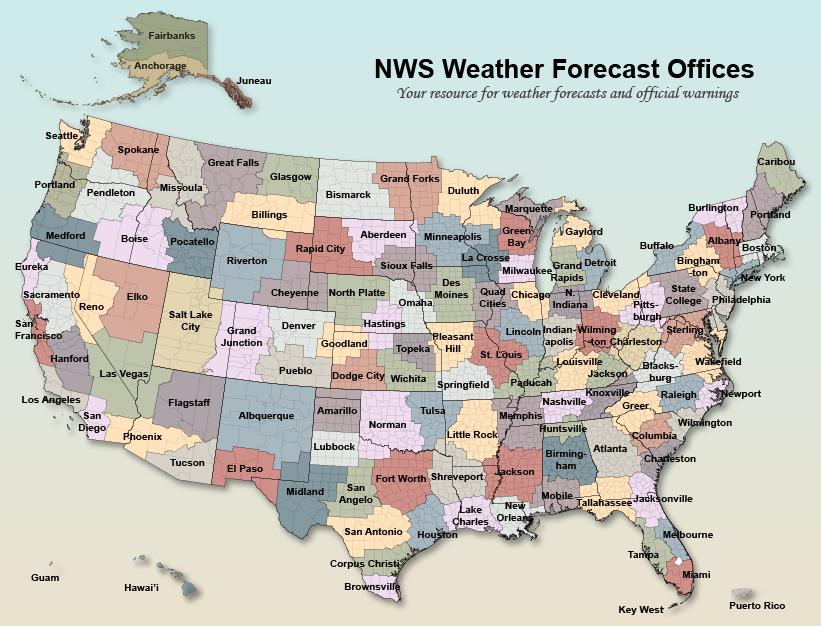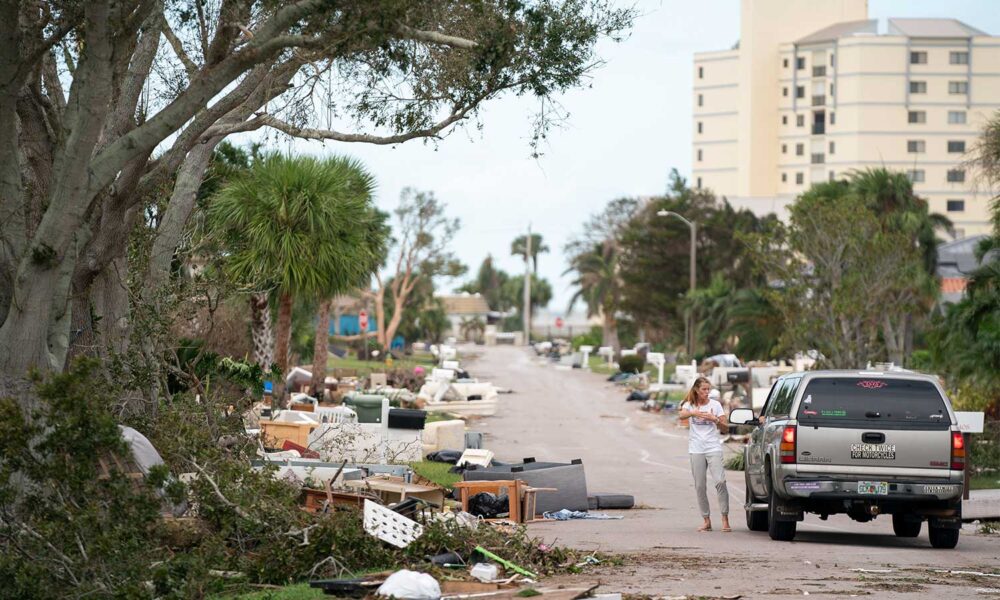As the climate crisis advances unchecked, the work of federal agencies dedicated to protecting our health and the places where we work, play, worship, produce food, energy, and shop has become critical and are now at great peril. One such agency is the National Oceanic and Atmospheric Administration (NOAA), which provides the scientific bedrock of data needed to protect our health, homes, and livelihoods from climate change and other environmental threats.
This year’s heat waves, hurricanes, flooding, and wildfires for millions across the country shows that people in the United States rely on the scientific data and information that thousands of federal scientists tirelessly churn out and make available for decision-makers, emergency responders, and the general public. From providing operational meteorology for forecasting heat waves or hurricanes with days or weeks in advance, to longer-term assessment of global and regional climate patterns, federal agencies provide data that saves lives.
But if Project 2025–the Heritage Foundation’s blueprint for the incoming second Trump administration–is implemented, NOAA will be dismantled, downsized, or some parts of it put in private hands, compromising or outright eliminating the valuable services the approximately 11,000 employees who work there provide to the country.
In general, the new Trump administration presents grave threats to priorities on climate, energy, and justice. Project 2025 would be a disaster for the country and climate, as it intends to politicize the climate and environmental science that informs policy-making, promote an energy agenda based on fossil fuels, attack bedrock environmental protections, and eliminate the use of the Social Cost of Carbon in government estimates of the cost of climate change, among others. In this post I will focus on Project 2025’s ill-advised designs for NOAA.
NOAA scientists’ data saves lives. Project 2025 would dismantle the agency.
NOAA’s work is crucial for monitoring and understanding climate change, and each of its various divisions play an integral role in protecting our ecosystems and communities. NOAA does a lot of important work in partnership with communities to protect them from climate and increasing resilience. For example, the Climate Adaptation Partnerships (CAP, formerly known as the Regional Integrated Sciences and Assessments, or RISA) program collaborates with researchers, decision makers, and communities to support resilience in the face of climate risks such as storms, droughts, flooding, extreme heat and wildfires. These partnerships have resulted in, for example, the creation of weather forecasting tools that help maritime operators make better decisions around vessel routes and schedules to navigate the icy waters of the Arctic. This fantastic story map showcases local CAP work with local communities to address extreme heat, dust storms, water/drought planning, fire and disaster planning, among others across the country.
NOAA has many key divisions that perform critical work to inform decision-making around climate change and its impacts. Here is a listing of the most important ones.
The National Hurricane Center‘s (NHC) mission is to “save lives, mitigate property loss, and improve economic efficiency by issuing the best watches, warnings, forecasts, and analyses of hazardous tropical weather and by increasing understanding of these hazards”.
The NHC works closely with the National Weather Service (NWS), an office best known for its vital role in providing extreme weather alerts for the 122 Weather Forecast Offices across the country. Using data from satellites and advanced models, NWS and NHC warn the public of impending storms, floods, and heatwaves, helping save lives and minimize damage. Travel across the country by water, land, and air is safer in part thanks to timely extreme weather data. And NHC’s forecasts have been improving over the past few decades: storm track errors, a common metric of the accuracy of storm path forecasts, have gone down in recent years according to a report from the American Meteorological Society.
This hurricane season, NOAA’s forecasts were so accurate that Hurricane Milton made landfall only 12 miles north of the location the first forecast had predicted. Hurricane Helene’s loss of life was reduced in the Gulf Coast in part due to an early and accurate forecast that made possible evacuation orders well in advance of landfall in Florida. UCS’ own Danger Season tracker of extreme weather alerts and impacted communities depends on alerts issued by the NWS.

The National Ocean Service (NOS) provides valuable data on economic, environmental, and social pressures impacting our coasts, Great Lakes, and oceans. From coastal erosion to pollution, NOS’s science helps states and communities manage these resources sustainably.
The Oceanic and Atmospheric Research (OAR) program develops foundational climate science research to understand climate events such as tornadoes, hurricanes, ocean currents, El Niño and La Niña events, as well as the health of coastal environments. OAR plays a major role in the U.S. Global Change Research Program, tracking climate patterns and assessing long-term impacts of climate change for the country via the comprehensive National Climate Assessment.
The data produced is essential for global scientific understanding and informs local and national climate policies. In addition, OAR’s research improves weather forecasting models, helping to predict severe weather and air quality issues more accurately. These efforts save lives by providing advanced warning and helping communities prepare for hurricanes, wildfires, and air pollution events. OAR also monitors the Arctic’s rapidly changing environment, as it significantly influences global weather patterns and sea levels. From melting sea ice to shifts in marine life, this research is vital to understanding and adapting to climate impacts.

The National Environmental Satellite, Data, and Information Service (NESDIS) operates NOAA’s satellite programs, which monitor climate and weather conditions globally. These satellites provide essential data on everything from sea surface temperatures to hurricane tracking, giving communities and policymakers the data needed to prepare for extreme weather.

NESDIS manages the satellite programs that inform the U.S. Drought Monitor, an assessment of drought conditions used by, for example, the US Department of Agriculture to trigger disaster declarations and eligibility for low-interest loans for farmers across the country. Drought.gov.
The National Marine Fisheries Service (NMFS) supports sustainable fishing practices and protects marine species, a critical part of maintaining balanced ocean ecosystems that can withstand climate pressures.
The Office of Marine and Aviation Operations (OMAO) and NOAA Corps oversee NOAA’s fleet of ships and aircraft used for research and data collection, essential for on-the-ground climate and ecosystem studies.
Project 2025 would eliminate unbiased data
Though NOAA does not make policy recommendations, the science and scientific data that it produces informs fact-based assessments of climate and other environmental threats that serve as the basis for policymakers to make sound policies. By creating and advancing climate science research, NOAA lays the unbiased, scientific bedrock of data and information for decision- and policy-making that can deliver for us a climate-resilient future. Investing in their work and supporting their mission to understand climate change will benefit current and future generations.
But Project 2025 would change all of that, proposing that NOAA “should be dismantled and many of its functions eliminated, sent to other agencies, privatized, or placed under the control of states and territories” (see page 664 in Mandate for Leadership.) This is ill-advised for many reasons.
Climate-augmented extreme weather events have little regard for state boundaries, and are influenced by global and regional atmospheric and oceanic conditions. As such, nationwide data collection and analysis provides the most scientifically-accurate information that can be used to issue forecasts and projections to protect people across the country.
Privatization of public services–a change proposed by Project 2025 for NOAA’s weather forecasts–does not automatically equal better services. Handing essential services to private operators needs to come in with clear accountability and performance metrics to guarantee service levels, and must ensure that towns, counties, or states with less resources are not left without access to these critical data. Without equity in access to service, privatization could also mean that regions with higher risks for heat, hurricanes, or flooding risks, to name a few, could be forced to pay more to access weather forecasts or alerts.
Recent experiences in privatizing critical services such as electricity generation and distribution in the US territory of Puerto Rico, for example, have resulted in degraded, life-threatening reliability of a vital utility, largely due to lack of accountability and performance metrics in privatization contracts.
Why we need NOAA now more than ever
All public agencies, including NOAA, should be held accountable by the public and the rest of government to ensure they fulfill their mission and make the best possible use of taxpayers’ money. But this is not what the second Trump administration and Project 2025 intend to do.
If the first Trump government is any indication, the intention is to dismantle, intervene, and politicize NOAA in order to facilitate profit-making for industries that make more money the more they pollute and the less they have to invest in technologies or processes to reduce the harmful impacts of their activities. The fossil fuel industry can deny all they want, but the health and ecosystem impacts will not be willed away; they will just continue to be passed down to communities across the planet and the country, and the progress that has been made in addressing climate impacts and environmental quality and in reducing injustices and inequities will be rolled back.
We need champions like NOAA to stand strong in the face of climate change. Their research, policies, and environmental protections are essential building blocks for a sustainable and just future. The first Trump government took a wrecking ball approach at perverting the roles and missions of scientific agencies and offices that protect us.
The incoming second Trump government has an intentional and dangerous blueprint in Project 2025 to repurpose the public services NOAA provides in order to line the pockets of the fossil fuel and other polluting industries. NOAA has a clear track record of providing the best science available to protect against loss of life and property in the face of worsening climate change and must be protected.

